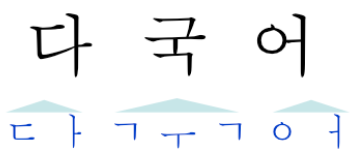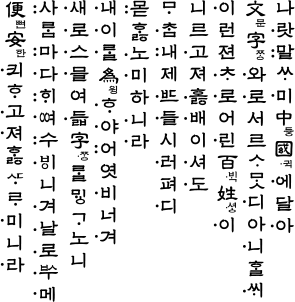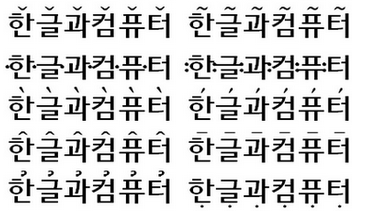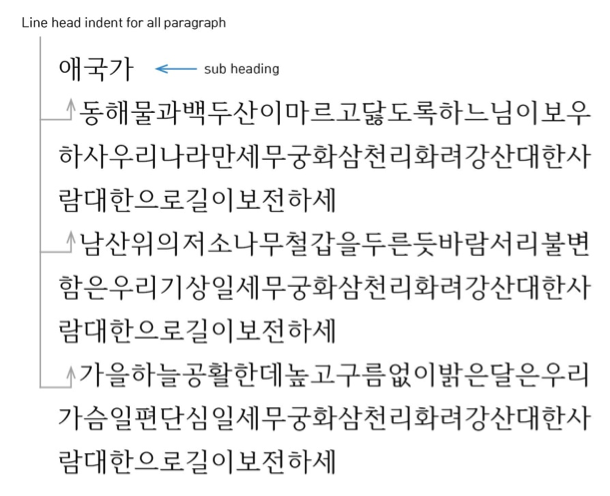Characters used for the Korean language have the following assignments related to line-break properties.
Show legend ul,#Properties
AI (ambiguous, alphabetic or Ideograph) line breaking behavior depends on the context, and may reflect different rules in East Asian and other contexts.
AL (ordinary alphabetic and symbol characters) requires other characters to provide break opportunities; otherwise, unless tailored rules are applied, no line breaks are allowed between pairs of them.
B2 (break opportunity before and after) the EM DASH used to set off parenthetical text may allow line breaks before or after, but may also be affected by local orthographic rules.
BA (break after) indicates that it is normal to break after that character.
CL (close punctuation) should be kept with the preceding character. The class CL is closely related to the class CP (Close Parenthesis). They differ only in that CP will not introduce a break when followed by a letter or number, which prevents breaks within constructs like “(s)he”.
CP (closing parenthesis) will not cause a break opportunity when appearing in contexts like “(s)he.” In all other respects the breaking behavior of CP and CL are the same.
EX (exclamation mark/interrogation) behave like closing characters, except in relation to postfix (PO) and non-starter characters (NS).
GL (non-breaking “glue") non-tailorable, non-breaking characters prohibit breaks on either side, but that prohibition can be overridden by SP or ZW.
H2 (Hangul LV syllable) includes all characters of Hangul Syllable Type LV.
H3 (Hangul LVT syllable) includes all characters of Hangul Syllable Type LVT.
HY (hyphen) additional context analysis is required to distinguish usage of this character as a hyphen from its usage as a minus sign (or indicator of numerical range). If used as hyphen, it acts like U+2010 HYPHEN, which has line break class BA.
ID (ideographic) do not require other characters to provide break opportunities; lines can ordinarily break before and after and between pairs of ideographic characters. Note that this class also includes characters other than Han ideographs..
IN (inseparable characters) is intended to be used consecutively. There is never a line break between two characters of this class.
IS (infix numeric separators) usually occurs inside a numerical expression and may not be separated from the numeric characters that follow, unless a space character intervenes. For example, there is no break in “100.00” or “10,000”, nor in “12:59”..
JL (Hangul L jamo) all characters of Hangul Syllable Type L.
JT (Hangul T jamo) all characters of Hangul Syllable Type T.
JV (Hangul V jamo) all characters of Hangul Syllable Type V.
NS (nonstarters) cannot start a line, but unlike CL they may allow a break in some contexts when they follow one or more space characters.
NU (number) behaves like ordinary characters (AL) in the context of most characters but activate the prefix and postfix behavior of prefix and postfix characters.
OP (open punctuation) should be kept with the character that follows. This is desirable, even if there are intervening space characters, as it prevents the appearance of a bare opening punctuation mark at the end of a line.
PO (postfix numeric) usually follows a numerical expression and may not be separated from preceding numeric characters or preceding closing characters, even if one or more space characters intervene. For example, there is no break opportunity in “(12.00) %”..
PR (numeric prefix) may not be separated from following numeric characters or following opening characters, even if a space character intervenes. For example, there is no break opportunity in “฿ (100.00)”.
QU (quotation) characters can be opening or closing, or even both, depending on usage. The default is to treat them as both opening and closing.
SY (symbols allowing break after) provides a break opportunity after, except in front of digits, so as to not break “1/2” or “06/07/99”.



















